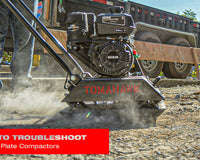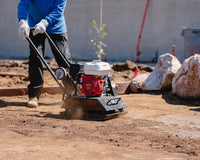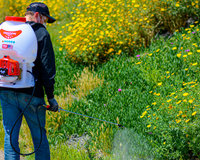As winter settles in, homeowners face the common challenge of keeping their driveways clear and safe. While traditional rock salt remains a popular choice, many alternatives have emerged that offer better performance, reduced environmental impact, and improved safety for pets and vegetation. This guide compares the most commonly used de-icing products and explains how the right tools—like those from Tomahawk Power—can improve their application and efficiency.
Rock Salt (Sodium Chloride): Affordable but Limited
Rock salt is one of the most widely used de-icers due to its low cost and availability. It works best at temperatures above 15°F (-9°C), making it ineffective during extreme cold spells. In addition to being corrosive to metal and concrete, it poses risks to nearby vegetation and is not pet-friendly. Still, it remains a common go-to for homeowners on a budget. Spreading evenly is key, and using a walk-behind salt spreader or handheld tool can help control application.
Calcium Chloride: Fast-Acting and Cold-Tolerant
Calcium chloride melts ice at much lower temperatures—down to -25°F (-32°C). It is highly effective and works quickly by absorbing moisture from the air and generating heat. However, it's more expensive than rock salt and can leave a greasy residue. When applied correctly, calcium chloride is a reliable choice for extremely cold conditions. To maximize coverage and avoid overuse, homeowners can use powered applicators like Tomahawk's battery-powered sprayers for uniform distribution.
Magnesium Chloride: Safer for Pets and Plants
Magnesium chloride is increasingly favored for its lower environmental impact. It is less corrosive and safer for concrete, vegetation, and pets, while still effective down to around 5°F (-15°C). Although slightly more costly than rock salt, it provides a good balance between performance and safety. It’s available in pellet and flake form and can be applied with standard spreaders or brine sprayers, depending on the product type.
Urea-Based Products: Gentle but Less Effective
Urea is a nitrogen-based compound often marketed as a safer alternative. While it is less corrosive and relatively harmless to plants, it only works in temperatures above 25°F (-4°C) and is slow to act. It's more suitable for light frost or pre-treatment rather than thick ice buildup. Its main appeal lies in being pet- and plant-friendly, though users should note that overuse can lead to excessive nitrogen in the soil.
Liquid De-Icers and Brines: Efficient Coverage, Less Waste
Liquid de-icers are growing in popularity due to their ability to prevent ice from bonding to surfaces. These solutions are typically a mix of salts and water and can be applied ahead of a storm as a proactive measure. They cover driveways evenly and reduce bounce or scatter loss. Homeowners looking for efficient application can benefit from using Tomahawk's sprayer systems, which are designed for broad, controlled spraying with minimal effort.
As noted by Winter Property Safety Journal, “Matching the de-icer to your climate and driveway material is as important as applying it correctly. Tools that ensure even coverage not only save product but also reduce risk” (Winter Property Safety Journal, 2022). With so many products available, understanding their strengths and limitations—and pairing them with efficient equipment—can simplify winter driveway maintenance and ensure safe conditions throughout the season.









